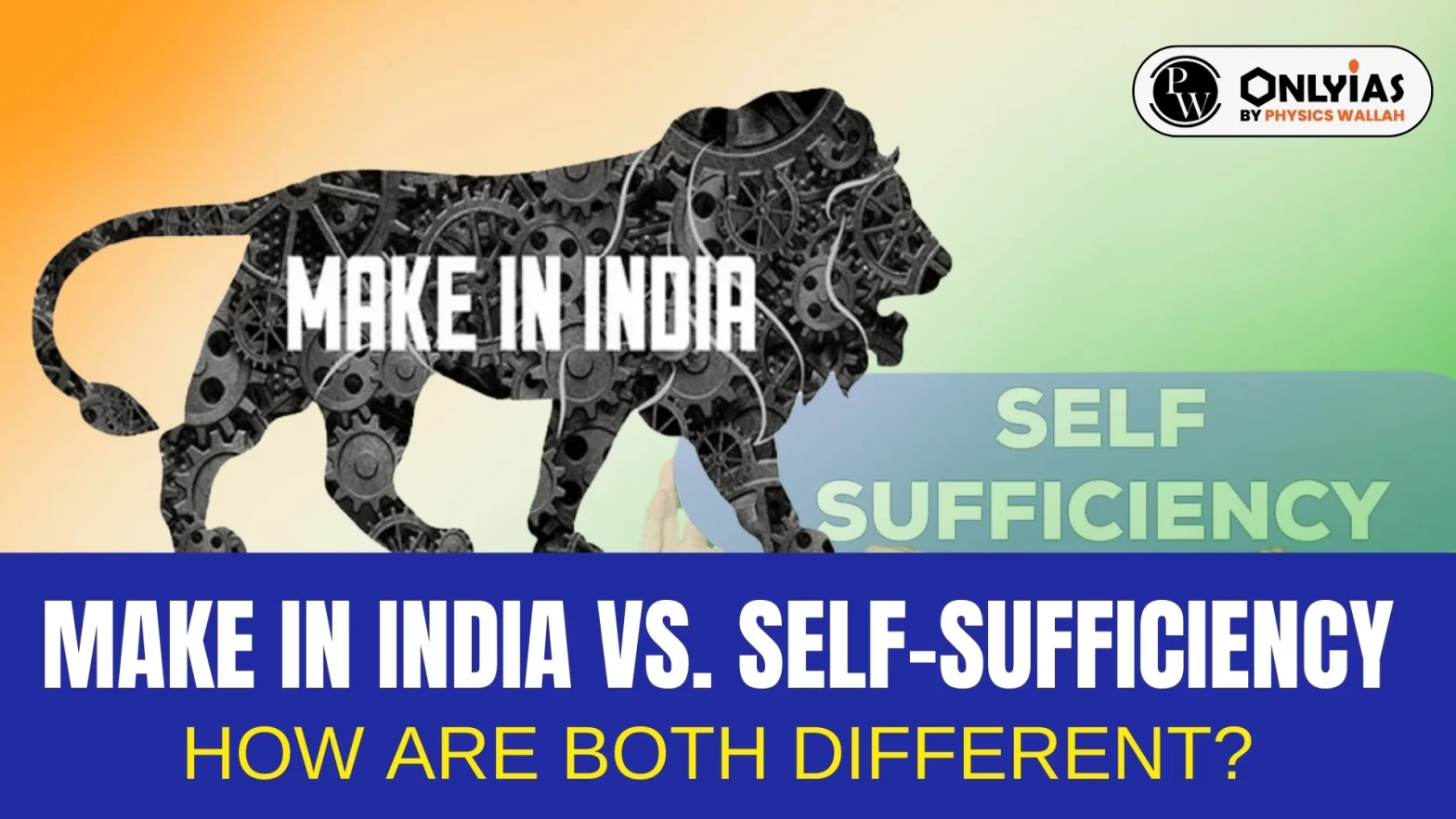Context: This article is based on an Editorial “There is no substitute for an industrial policy” which was published in the Tribune. The article discusses about how government’s flagship program ‘Make in India’ is different from the dogma of ‘self-sufficiency ‘that India embraced in the 1970s.
| Relevancy for Prelims: Industrial Policy, License Raj, Make for India, Made in India, MSME sector, and PLI Schemes.
Relevancy for Mains: Make in India Vs Self-Sufficiency: How Are Both Different? |
How is ‘Make in India’ different from ‘Self Sufficiency’?
- Distinct from Dirigiste Past: Make in India (MII) does not, bring back dirigiste recollections of the license raj, self-sufficiency, import-substituting industrialisation which was associated with the concept of ‘Self Sufficiency’.
- Limiting License Raj: It allows foreign companies to manufacture in India, by limiting license raj and encourages India to become part of global supply chains.
- ‘Make in India’ as Brand: Government wants to make Make in India a brand by focusing on quality standards.
- For example: Japan has made a name for itself in the international market like toyota.
Lessons from the 1970s and 1980s
- During the 1970s and 1980s reckless protection created shortages, black markets, and rampant rent-seeking, all in the name of the poor and distributive justice.
Derivative of Make in India
- Make for India: Make for India involves production for consumption in India itself and focuses on manufacturing for the domestic market;
- Made in India: It is a branding strategy to promote manufacturers born out of Indian factors of production — land, labor, capital, entrepreneurship, technology, etc. and can only succeed on the back of an effective MII operation.
Market Challenges in India
- Low Paying: India’s labor market research points towards the presence of low-paying, subdued productivity, and mostly informal jobs in the unorganized sector.
- Informal MSME sector: Over 99 per cent of India’s 63 million micro, small and medium enterprises (MSMEs) are in the unorganized sector with very little flexibility for productive job creation.
Concerns About ‘Make in India’
- Make in India is being implemented in some sectors, particularly by raising tariff duties to provide protection to encourage the setting up of domestic industry.
Views of Kaushik Basu’s on Economic Policymaking
- He emphasized that economic policymaking should contain both an intellect (to interpret data) and a moral compass to shape a better world.
Recommendation
- There should be focus on PLI schemes for such sectors such as textile, garment which are labor intensive to counter jobless growth.
- For Example: In Bangladesh, the textile industry has been supported by the State by providing machinery and led to creation of jobs.
Must Read: Vision 2047: A Roadmap To A $30 Trillion Economy
Conclusion:
‘Make in India’ differs from past ‘Self-Sufficiency’ approaches, promoting global ties and quality. Although there are concerns about job challenges and specific industry focus with it. But if we stick to high standards, tackle market challenges, and support labor-intensive industries through PLI schemes, we can build a better, more inclusive economic future.
![]() 29 Dec 2023
29 Dec 2023

